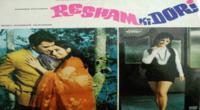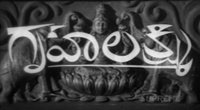
A supermodel (also spelled super-model and super model) is a highly paid fashion model who usually has a worldwide reputation and often a background in haute couture and commercial modeling. The term supermodel became prominent in the popular culture of the 1980s and 90s.
Supermodels usually work for prominent fashion designers and clothing brands. They may have multimillion-dollar contracts, endorsements, and campaigns. Supermodels have branded themselves as household names and worldwide recognition is associated with their modeling careers. They have been on the covers of magazines such as French, British, American, and Italian Vogue. Claudia Schiffer stated, "In order to become a supermodel one must be on all the covers all over the world at the same time so that people can recognise the girls."
Contents
History
Origins
An early use of the term supermodel appeared in 1891 in an interview with artist Henry Stacy Marks for The Strand Magazine, in which Marks told journalist Harry How, "A good many models are addicted to drink, and, after sitting a while, will suddenly go to sleep. Then I have had what I call the 'super' model. You know the sort of man; he goes in for theatrical effect ..." On 6 October 1942, a writer named Judith Cass had used the term super model for her article in the Chicago Tribune, which headlined "Super Models are Signed for Fashion Show". Later in 1943, an agent named Clyde Matthew Dessner used the term in a "how-to" book about modeling entitled So You Want to Be a Model! in which Dessner wrote, "She will be a super-model, but the girl in her will be like the girl in you—quite ordinary, but ambitious and eager for personal development." According to Model: The Ugly Business of Beautiful Women by Michael Gross, the term supermodel was first used by Dessner. In 1947, anthropologist Harold Sterling Gladwin wrote "supermodel" in his book Men Out of Asia. In 1949, the magazine Cosmopolitan referred to Anita Colby, the highest paid model at the time, as a "super model": "She's been super model, super movie saleswoman, and top brass at Selznick and Paramount." On 18 October 1959, Vancouver's Chinatown News described Susan Chew as a "super model".
The term supermodel had been used several times in the media in the 1960s and 1970s. In 1965, the encyclopedic guide American Jurisprudence Trials used the term "super model" ("...at issue was patient's belief that her husband was having an affair with a super model"). On 21 March 1967, The New York Times referred to Twiggy as a supermodel; the February 1968 article of Glamour listed all 19 "supermodels"; the Chicago Daily Defender wrote "New York Designer Turns Super Model" in January 1970; The Washington Post and Mansfield News Journal used the term in 1971; and in 1974 both the Chicago Tribune and The Advocate also used the term "supermodel" in their articles. American Vogue used the term "super-model" to describe Jean Shrimpton in the 15 October 1965 edition and "supermodel" on the cover page to describe Margaux Hemingway in the 1 September 1975 edition. Hemingway was again described as a 'supermodel' in the 25 July 1977 edition of Time. Jet also described Beverly Johnson as a "supermodel" in the 22 December 1977 edition.
Model Janice Dickinson has incorrectly stated that she coined the term supermodel in 1979, as a compound of Superman and model. During an interview with Entertainment Tonight, Dickinson stated that her agent Monique Pilar of Elite Model Management asked her, "Janice, who do you think you are, Superman?" She replied, "No ... I'm a supermodel, honey, and you will refer to me as a supermodel and you will start a supermodel division." Dickinson also claims to be the first supermodel.
Lisa Fonssagrives is widely considered the world's first supermodel. She was in most of the major fashion magazines and general interest magazines from the 1930s to the 1950s, including Town & Country, Life, Vogue, the original Vanity Fair, Harper's Bazaar, and Time. Dorian Leigh has also been called the world's first supermodel, as well as Gia Carangi and Jean Shrimpton.
1960s–1970s
In February 1968, an article in Glamour described 19 models as "supermodels": Cheryl Tiegs, Veruschka, Lisa Palmer, Peggy Moffitt, Sue Murray, Twiggy, Sunny Harnett, Marisa Berenson, Gretchen Harris, Heide Wiedeck, Irish Bianchi, Hiroko Matsumoto, Anne de Zogheb, Kathy Carpenter, Jean Shrimpton, Jean Patchett, Benedetta Barzini, Claudia Duxbury and Agneta Frieberg.
In the 1970s, some models became more prominent as their names became more recognizable to the general public. Sports Illustrated editor Jule Campbell abandoned then-current modeling trends for its fledgling Sports Illustrated Swimsuit Issue by photographing "bigger and healthier" California models and captioning the photographs with their names, turning many of them into household names and establishing the swimsuit issue as a cornerstone of supermodel status.
In 1975, Margaux Hemingway landed a then-unprecedented million-dollar contract as the face of Fabergé's Babe perfume and the same year appeared on the cover of Time magazine, labelled one of the "New Beauties", giving further name recognition to fashion models.
Lauren Hutton became the first model to receive a huge contract from a cosmetics company and appeared on the cover of Vogue 26 times. Iman is considered to have been the first supermodel of color.
Donyale Luna was the first black model to appear in British Vogue. Naomi Sims, who is sometimes regarded as the first black supermodel, became the first African American to feature on the cover of Ladies' Home Journal in 1968. The first African American model to be on the cover of American Vogue was Beverly Johnson in 1974.
Other notable "supermodels" of the time were Beverly Johnson, Cybill Shepherd, Patti Hansen, Penelope Tree, Grace Jones, Janice Dickinson, Pat Cleveland, Rene Russo, Gia Carangi, Jerry Hall, Wilhelmina Cooper, Christie Brinkley, Edie Sedgwick, and Kelly Emberg.
1980s
In October 1981, Life cited Shelley Hack, Lauren Hutton, and Iman for Revlon, Margaux Hemingway for Fabergé, Karen Graham for Estee Lauder, Cristina Ferrare for Max Factor, and Cheryl Tiegs for CoverGirl by proclaiming them the "million dollar faces" of the beauty industry. These models negotiated previously unheard of lucrative and exclusive deals with giant cosmetics companies, were instantly recognizable, and their names became well known to the public.
In the early 1980s, Inès de La Fressange was the first model to sign an exclusive modeling contract with an haute couture fashion house, Chanel. During the early 1980s, fashion designers began advertising on television and billboards. Catwalk regulars like Gia Carangi, Tiegs, Brinkley, Kim Alexis, Paulina Porizkova, Yasmin Le Bon, Kathy Ireland, Brooke Shields, Carol Alt and Elle Macpherson began to endorse products with their names, as well as their faces, through the marketing of brands such as Diet Pepsi and Ford trucks.
As the models began to embrace old-style glamour, they were starting to replace film stars as symbols of luxury and wealth. In this regard, supermodels were viewed not so much as individuals but as images.
1990s
By the 1990s, the supermodel became increasingly prominent in the media. The title became tantamount to superstar, to signify a supermodel's fame having risen simply from "personality." Supermodels did talk shows, were cited in gossip columns, partied at the trendiest nightspots, landed movie roles, inspired franchises, dated or married film stars, and earned themselves millions. Fame empowered them to take charge of their careers, to market themselves, and to command higher fees.
The new era began in 1990, with the era-defining British Vogue cover of Naomi Campbell, Cindy Crawford, Christy Turlington, Linda Evangelista, and Tatjana Patitz,[64] photographed by Peter Lindbergh which created such an impression on the fashion world that they came to embody the term "supermodel".[65] Individually and as an elite group, it seemed as if the idea of "the supermodel" had been coined just for them. Each model had gradually attained fame since the mid-1980s and was now among the industry's top stars. Selected by Lindbergh[66] for the January cover of Vogue, the now famous cover inspired singer George Michael to cast the same five models in the music video for his song, "Freedom! '90", directed by David Fincher.[67] Other notable photographs capturing this new generation of models, including the famous nude taken by Herb Ritts for Rolling Stone that included Patitz, Crawford, Campbell, Turlington and Stephanie Seymour, helped each supermodel attain worldwide fame and fortune by sharing covers of all the international editions of Vogue, walking the catwalks for the world's top designers, and becoming known by their first names alone.[68]
Today, Campbell, Crawford, Evangelista, Patitz and Turlington are regarded as the "Original Supermodels."[69][70][71]
In 1991, Turlington signed a contract with Maybelline that paid her $800,000 for twelve days' work each year. Four years later, Claudia Schiffer reportedly earned $12 million for her various modeling assignments.[59] Authorities ranging from Karl Lagerfeld to Time had declared the supermodels more glamorous than movie stars.
Campbell, Evangelista and Turlington became known as The Trinity, a term first used by photographer Steven Meisel and noted by journalist Michael Gross.[72] Evangelista was known as the "Chameleon", for her ability to transform her look and reinvent herself.[73] Turlington was known as the "insurance model", saying "clients know that if they hire me, nothing will go wrong".[74] Campbell was the first black model to appear on the front cover of Time, French Vogue, British Vogue, and the September issue of American Vogue, traditionally the years biggest and most important issue.[75]
Campbell, Crawford, Evangelista, Patitz and Turlington were the original group to be regarded as "The Big Five" supermodels of the 1990s,
Watch movie Super Model online on Amazon
Watch movie Super Model online
Watch The Movie On PrimeMithya Full HD Movie Download

Bhool Bhulaiyaa Full HD Movie Download

Thodi Life Thoda Magic Full HD Movie Download

Nayee Padosan (2003) Full HD Movie Download
.jpg)
Dil Ne Phir Yaad Kiya (2003) Full HD Movie Download
.jpg)
Panaah Full HD Movie Download

Meri Jung Full HD Movie Download

Resham Ki Dori Full HD Movie Download

Joggers Park Full HD Movie Download

Deedar (1992) Full HD Movie Download
.jpg)
Hum Se Hai Zamana Full HD Movie Download

Chanda Full HD Movie Download

Annabond Full HD Movie Download

Jalakanta Full HD Movie Download

Meri Adalat Full HD Movie Download

RocknRolla Full HD Movie Download

Jyoti Full HD Movie Download

Anbukku Naan Adimai Full HD Movie Download

Dear Brother Full HD Movie Download

Gruha Lakshmi Full HD Movie Download

Thoda Pyaar Thoda Magic Full HD Movie Download

Download latest Movie from bollywood
- 1> baaghi 3
- 2> THE SKY IS PINK MOVIE FULL STORY AND REVIEW
- 3> Luka Chuppi
- 4> TO ALL THE BOYS I’VE LOVED BEFORE
- 5> Kabir Singh
- 6> Street Dancer 3D
- 7> Simmba
- 8> Gone Girl
- 9> The Girl Who Lived
- 10> Ludo
- 11> DILWALE DULHANIA LE JAYENGE
- 12> GUILTY
- 13> The Godfather
- 14> Adventures of Rusty
- 15> Sooryavanshi
- 16> Satyameva Jayate 2
- 17> Thappad
- 18> Bhool Bhulaiyaa 2
- 19> KGFChapter 2
- 20> Mardaani 2
- 21> Pinjar
- 22> Shivaji maharaj
- 23> Ek Villian 2
- 24> Hungama 2
- 25> Divergent
- 26> Mumbai Saga
- 27> The Internship
- 28> HIT (telugu)
- 29> Panga
- 30> The perfect date
- 31> 16 December
- 32> Gopala Gopala (Telugu)
- 33> Brahmastra
- 34> Gangubai Kathiawadi
- 35> Manmadhudu
- 36> Nenu local
- 37> Mahanati
- 38> Shatamanam bavathi
- 39> Lagaan
- 40> After
- 41> MOM
- 42> Shamshera
- 43> Raguvaran BTech
- 44> Khakee
- 45> The villain
- 46> OM
- 47> Mr. perfect
- 48> Bueatifull mind
- 49> Hichki
- 50> Gabbar Singh
- 51> Jogi
- 52> Before Sunrise
- 53> Before Sunset
- 54> Before Midnight
- 55> The Big Bull
- 56> Top Gun: Maverick
- 57> The Purge
- 58> The Sky is Pink
- 59> Laxmmi Bomb
- 60> Sadak 2
- 61> Sufna
- 62> Prithviraj
- 63> PK
- 64> Coolie No 1(2020)
- 65> Black Widow
- 66> Dear Zindagi
- 67> Dil Bechara
- 68> PHIR HERA PHERI
- 69> WAR
- 70> Dostana
- 71> RRR: Roudram Ranam Rudhiram
- 72> Maidan
- 73> Dabbang 3
- 74> Chhalaang
- 75> life as we know it
- 76> SherShaah
- 77> Sandeep Aur Pinky Faraar
- 78> Event Horizon
- 79> 83
- 80> Radhe: Your Most Wanted Bhai
- 81> Gunjan Saxena: The Kargil Girl
- 82> Mr India
- 83> Vivah
- 84> Anokha Bandhan
- 85> Ghost
- 86> Bhoot: Part One - The Haunted Ship
- 87> Haseen Dilruba
- 88> Laal Singh Chaddha
- 89> Qismat
- 90> Rajput
- 91> Drive
- 92> Dil Chahta Hai
- 93> Dil Ki Baazi
- 94> Dil Ka Rishta
- 95> Teesri Manzil
- 96> Dil
- 97> Love Aaj Kal
- 98> Khaali Peeli
- 99> Bunty Aur Babli 2
- 100> Atrangi Re
- 101> Gulabo Sitabo
- 102> Jodi
- 103> Suraj Pe Mangal Bhari
- 104> Deewana
- 105> Attack
- 106> Sardar Udham Singh
- 107> Toofan
- 108> THE LOVEBIRDS
- 109> Jersey
- 110> Ginny Weds Sunny
- 111> Thalaivi
- 112> Shiddat
- 113> Angels vs Zombies
- 114> Koi Mil Gya
- 115> Thank God
- 116> Bhuj: The Pride of India
- 117> Hum Aapke Hain Kaun
- 118> The Platform
- 119> Bird Box
- 120> Roohi Afzana
- 121> Torbaaz
- 122> Nikamma
- 123> World War Z
- 124> Extraction
- 125> Train to Busan
- 126> Life of Pi
- 127> SHAADI MEIN JROOR AANA
- 128> Himmat Aur Mehnat
- 129> To All The Boys: P.S. I Still Love You
- 130> Mimi
- 131> Good Newwz
- 132> Shubh Mangal Zyada Saavdhan
- 133> Raabta
- 134> Harry Potter and the Philosopher's Stone
- 135> Harry Potter and the Chamber of Secrets
- 136> Chhapaak
- 137> War of the Worlds
- 138> Harry Potter and the Prisoner of Azkaban
- 139> Harry Potter and the Goblet of Fire
- 140> MURDER MYSTERY
- 141> Shakuntala Devi
- 142> Bachchan Pandey
- 143> Jayeshbhai Jordar
- 144> Sheer Qorma
- 145> Saina
- 146> 'O' Pushpa I hate tears
- 147> Kedarnath
- 148> MS Dhoni The Untold Story
- 149> Chhichhore
- 150> Badhaai Ho
- 151> Unstoppable
- 152> Oz the Great And Powerful
- 153> The Girl on the Train
- 154> Haathi Mere Saathi 2020
- 155> The Conjuring: The Devil Made Me Do It
- 156> Gandhi Se Pehle Gandhi
- 157> The Song of Scorpions
- 158> Srimanthudu
- 159> Hello Guru Prema Kosame
- 160> Beauty and The Beast
- 161> Black Panther
- 162> Charlie and the Chocolate Factory
- 163> Bole Chudiyan
- 164> Fidaa
- 165> Duvvada Jagannadham
- 166> Bruce Lee: The Fighter
- 167> Hyper
- 168> Yaara
- 169> Red (2020)
- 170> Shivam
- 171> That Is Mahalakshmi
- 172> Nishabdham
- 173> Aashram 2020 web series
- 174> Laxmii
- 175> Mismatched
- 176> STUDENT OF THE YEAR 2
- 177> NAIL POLISH
- 178> Ramprasad Ki Tehrvi
- 179> KAAGAZ
- 180> 12 o Clock
- 181> The Power
- 182> bolo hau
- 183> Tribhanga
- 184> JAMUN
- 185> Madam Chief Minister
- 186> Maasaab
- 187> Aadhaar
- 188> Tanhaji
- 189> Bhaagi 3
- 190> Bhootnath
- 191> MALANG
- 192> Jai Mummy Di
- 193> Haathi Mere Saathi 2021
- 194> Shakeela
- 195> Unpaused
- 196> Annayya
- 197> Vamsoddharakudu
- 198> Mrugaraju
- 199> Narasimha Naidu
- 200> Sankranti
- 201> Manasu Maata Vinadhu
- 202> Anjaane
- 203> Apaharan
- 204> Bachke Rehna Re Baba
- 205> Bewafaa
- 206> Roohi
- 207> Radhe
- 208> Zindagi Khoobsoorat Hai
- 209> Yeh Mohabbat Hai
- 210> Yeh Kya Ho Raha Hai?
- 211> The Tomorrow War
- 212> DehradunDiary
- 213> Meri Shaadi Karaoo
- 214> Matruu Ki Bijlee Ka Mandola
- 215> No One Killed Jesica
- 216> Aag Ka Goola
- 217> Eight Million Dollars
- 218> Three Hundred
- 219> Cats and Dog
- 220> Decoy
- 221> Gold Rush
- 222> You Have Got Mail
- 223> Final Destination three
- 224> Tofan
- 225> Jungle
Request for Download movie Super Model
- Bollywood movies
- Latest Bollywood movies
- Download all bengali movies
- Download all bhojpuri movies
- Download all english movies
- Download all gujarati movies
- Download all hindi movies
- Download all kannada movies
- Download all malayalam movies
- Download all marathi movies
- Download all oriya movies
- Download all punjabi movies
- Download all tamil movies
- Download all telugu movies
- Bollywood action movies
- Bollywood adventure movies
- Bollywood animation movies
- Bollywood classical movies
- Bollywood comedy movies
- Bollywood crime movies
- Bollywood devotional movies
- Bollywood documentary movies
- Bollywood drama movies
- Bollywood family movies
- Bollywood fantasy movies
- Bollywood historical movies
- Bollywood history movies
- Bollywood horror movies
- Bollywood musical movies
- Bollywood mystery movies
- Bollywood mythological movies
- Bollywood patriotic movies
- Bollywood romance movies
- Bollywood romantic movies
- Bollywood sci-fi movies
- Bollywood social movies
- Bollywood spiritual movies
- Bollywood sports movies
- Bollywood suspense movies
- Bollywood thriller movies
- Bollywood war movies
- Hot actress list
- Hot gujarati actress list
- Hot tamil actress list
- Hot bhojpuri actress list
- Hot assam actress list
- Hot bihari actress list
- Hot jammu and kashmir actress list
- Hot gujarati actress list
- Hot haryana actress list
- Hot konkani actress list
- Hot marathi actress list
- Hot odia actress list
- Hot punjabi actress list
- Hot rajasthani actress list
- Hot kannada actress list
- Hot malayalam actress list
- Hot telugu actress list
- Hot tulu actress list
- Hot Actress list from Indian city
- Hot actress list from ahmedabad
- Hot actress list from alappuzha
- Hot actress list from bangalore
- Hot actress list from bangalore
- Hot actress list from bhopal
- Hot actress list from chandigarh
- Hot actress list from chennai
- Hot actress list from guwahati
- Hot actress list from hyderabad, india
- Hot actress list from indore
- Hot actress list from jaipur
- Hot actress list from kannur
- Hot actress list from kochi
- Hot actress list from kolkata
- Hot actress list from kollam
- Hot actress list from kottayam
- Hot actress list from kozhikode
- Hot actress list from lucknow
- Hot actress list from madurai
- Hot actress list from mangalore
- Hot actress list from mumbai
- Hot actress list from mysore
- Hot actress list from new delhi
- Hot actress list from patna
- Hot actress list from pune
- Hot actress list from thiruvananthapuram
- Hot actress list from thrissur
- Hot actress list from tiruchirappalli
- Hot actress list from vijayawada
- Hot actress list from visakhapatnam
- All Bollywood Movies
- Bollywood Celeb
- >Art Director
- >Audiography
- >Background Music
- >Banner
- >Choreographer
- >Cinematographer
- >Costume Designer
- >Dialogue Writer
- >Director
- >Distributor
- >Editor
- >Executive Producer
- >Hair Stylist
- >Lyricist
- >Music Director
- >Photographer
- >Playback Singers
- >Presenter
- >Producer
- >Production Company
- >Production Designer
- >Screenplay
- >Singer
- >Sound
- >Actor
- >Story Writer
- >Studio
- >Video Director
- >Miscellaneous
- >Publicity (pro)
- >Web Creator
- >Production Labs
- >Publicity Design
- >Publicity Stills
- >Writer
- >Miscellaneous Artists
- >Visual Effects
- >Reporter
- >Music Company
- >Shooting Studios
- >Picturised On
- >Line Producer
- >Co Producer
- >Asst Director
- >Casting Director
- >Cinematography
- >Choreography
- >Dialouge
- >Editing
- >Lyrics
- >Music
- >Story
- >Playback Singer Female
- >Playback Singer Male
- >Actor In A Comic Role (male/female)
- >Child Artiste
- >Ensemble Cast
- >Actor Popular Choice (male)
- >Actor Popular Choice (female)
- >Sa Re Ga Ma Pa Song Of The Year
- >Actor In Supporting Role
- >Actress In Supporting Role
- >Actor In Leading Role
- >Art Direction
- >Actress In Leading Role
- >Sound Recording
- >Costume Design
- >Special Effects
- >Action
- >Actor In A Negative Role
- >Lifetime Achievement Award
- >Cinematic Exellence (director)
- >Cinematic Exellence (male)
- >Cinematic Exellence (female)
- >International Male Icon
- >International Female Icon
- >Actor In A Supporting Role (male)
- >Actor In A Supporting Role (female)
- >Actor In A Comic Role
- >Playback Singer (male)
- >Playback Singer (female)
- >Most Promising Debut (female)
- >Most Promising Debut (male)
- >Most Promising Director
- >Sound Design
- >Lifetime Jodi
- >Marketed Film
- >Jury Award For Best Actor
- >Jury Award For Best Actress
- >Jury Award For Best Film
- >Jury Award For Best Director
- >Playback Singer(male)
- >Lifetime Acheivement Award (male)
- >Excellence Award
- >Jodi Award
- >Performer Of The Year
- >Presented By
